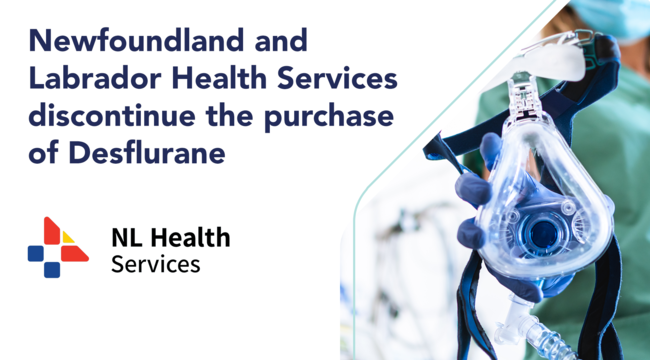HealthPRO Canada News
October 21, 2020
Procurement lessons learned and how Canada should prepare for the second wave
Christine Donaldson presents HealthPRO’s proactive strategy at the GHX Summit
In her presentation at the GHX Summit 20 Digital Connect, HealthPRO’s Christine Donaldson explained how the organization successfully managed drug shortages for members during the first COVID-19 wave and the proactive plan on how to manage risk and supply during the second wave.
Around the country, people are feeling anxious, uncertain and fearful about the impact of the second wave of COVID-19. Step inside our hospitals, assisted living and long-term care facilities and that concern is amplified ten-fold. The stakes may be higher in the second wave, but as Christine explained to delegates of the GHX Summit in late September, HealthPRO's members are ready.
A pharmacist herself, Christine is no stranger to crisis. “I have vivid memories as a Pharmacy Director myself, of living through the major drug shortage crisis in 2012,” she said. “So I can appreciate the challenges healthcare providers have faced, and continue to face, including COVID-19 fatigue.”
As grim as things can look from the other side of the gurney, Christine says adaptation and planning can prevent many of the worst-case scenarios we might be envisioning.
A persistent problem gets worse
The focus of Christine’s talk was on pharmacy’s experience with drug shortages and the steps needed to protect the country’s drug supply. Drug shortages have been a persistent problem around the globe for several years and, not surprisingly, got worse during the pandemic.
She shared a few of the long-term strategies that have enabled HealthPRO to manage those shortages for its members. The first is a split award contract strategy, where HealthPRO awards not one but two suppliers for critical drugs. When one supplier experiences a supply disruption, there is an opportunity to provide another source which may be readily available. “The strategy has so far mitigated 80% of supply disruptions in recent years,” said Christine.
The second approach is an open market strategy, which enables suppliers to contract with HealthPRO as an additional supply to a sole source drug within Canada. With this strategy, HealthPRO members no longer rely on one supplier for more than twelve critical drugs.
National aggregation is essential
Canada is an extremely small market for drug suppliers – 2% of the total global market – which could have become a real obstacle during the pandemic as bigger markets started accessing high volumes of essential drugs needed for treatment of COVID-19. “I'll never forget the day a CEO from one of our major pharmaceutical suppliers called to say that without sufficient committed volumes from Canada, a very important group of critical drugs that we desperately needed for COVID-19 patients was at risk of being exported to other countries,” she said.
The only way to protect the inventory for Canada was to guarantee purchasing volumes across HealthPRO’s national membership, a departure from the usual practice of individual hospitals purchasing only what they need based on patient demand. “We quickly realized that acting nationally was essential to ensuring that we secured these critical products,” said Christine.
The strategy worked – with a national commitment, a solid inventory of essential drugs was maintained in Canada.
A practical map for managing through the second wave
In the final segment of her presentation, Christine turned her attention to preparing for the next wave. This is where HealthPRO’s experience enables a clear-eyed and practical map for managing a new level of uncertainty and risk, especially around drug shortages. “It comes down to three key ideas,” said Christine. “Supply chain resilience, greater national coordination, and more visibility into supply chains.”
1 – Supply chain resilience: “We commend our governments for committing to a ramp-up of domestic production of pandemic supplies and medications, but this may not be the ultimate silver bullet,” said Christine. At this time, 80 to 90% of the active pharmaceutical ingredients (raw drug substance) are sourced abroad and HealthPRO doesn’t expect to see that changing anytime soon.
But there is another way to reduce our vulnerability. “We’re now requiring our suppliers to keep at least 90 days, as opposed to the usual 60 days, of inventory of critical medications to deal with a possible surge in demand,” she said. With global demand still high, Canada may also need to guarantee purchases of certain critical drugs, a strategy that worked during the first wave.

2 – Greater national cooperation: The framework HealthPRO developed for Proactive Supply Management illustrates how surveillance – something Christine credits Health Canada for doing well – and consultation with key healthcare stakeholders are crucial for monitoring supply. “If we see supply is becoming limited, we use the established framework to ensure fair allocation and if supply is running how, that’s our signal to go to suppliers and ramp up production.”

3 – More transparency in the supply chain: Visibility to all layers of the supply chain will help to diversify supply and mitigate future risk. Christine drew a parallel between the ease of searching for a product on the Canadian Tire website and the absence of such visibility for essential medications. "If we can do it for barbecues, why not for propofol?" she asked.
If the government had the right access to this information, she suggested, we could make real-time arrangements to mobilize supply exactly where it needs to go, and for those patients who need it most.
The small size of our country and differences in the way procurement happens provincially are going to continue to be barriers, but with a smile Christine shared her optimistic view we have a chance to do things differently this time around. “We can look back now and say many of the actions we witnessed (in the first wave) were reactive,” said Christine. “We have an opportunity to shift to being more proactive.”


